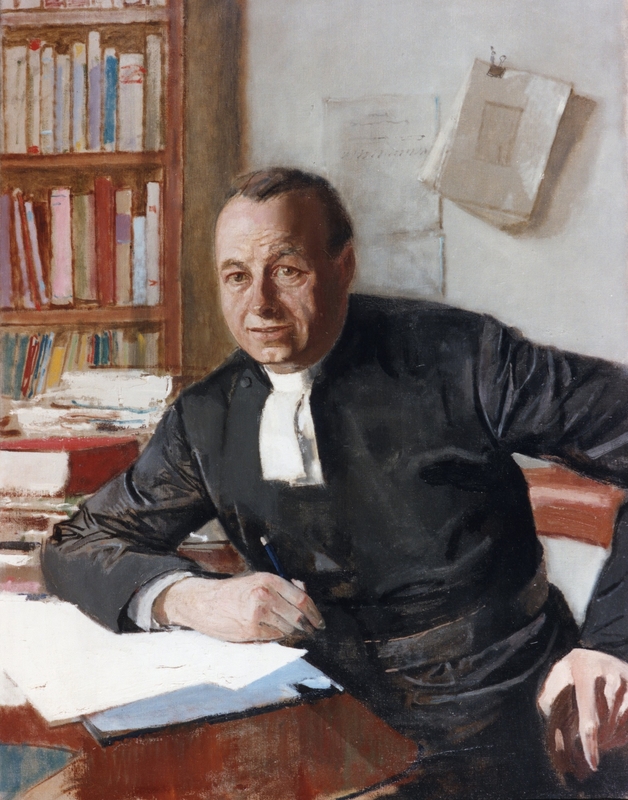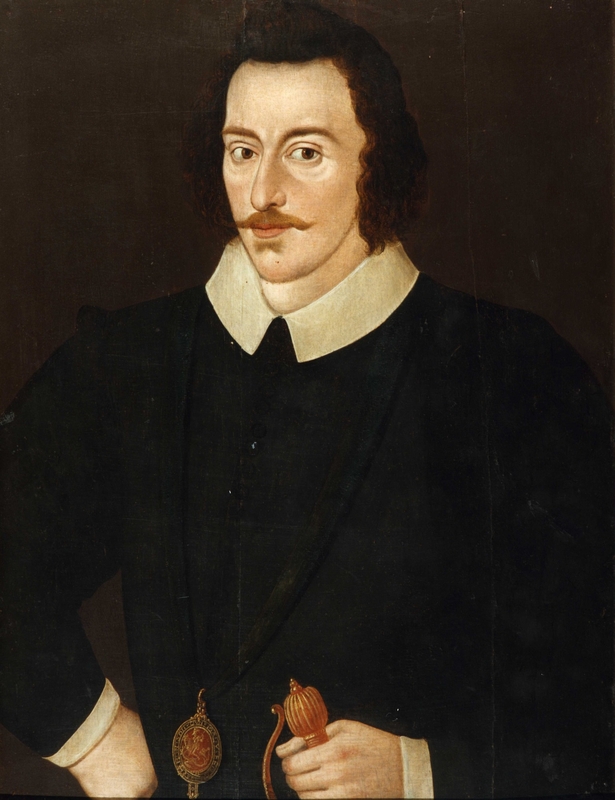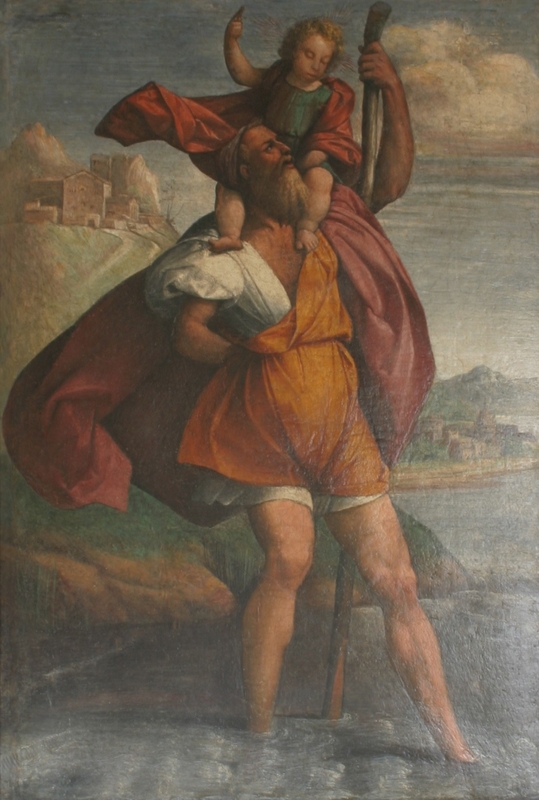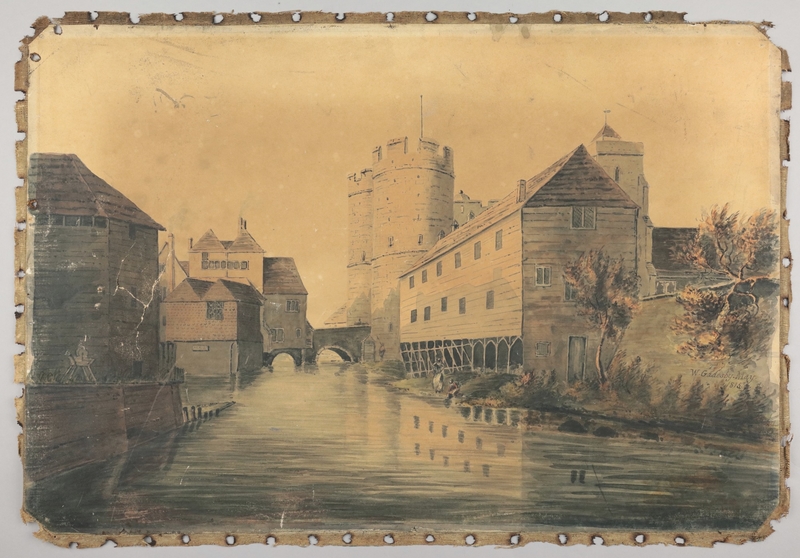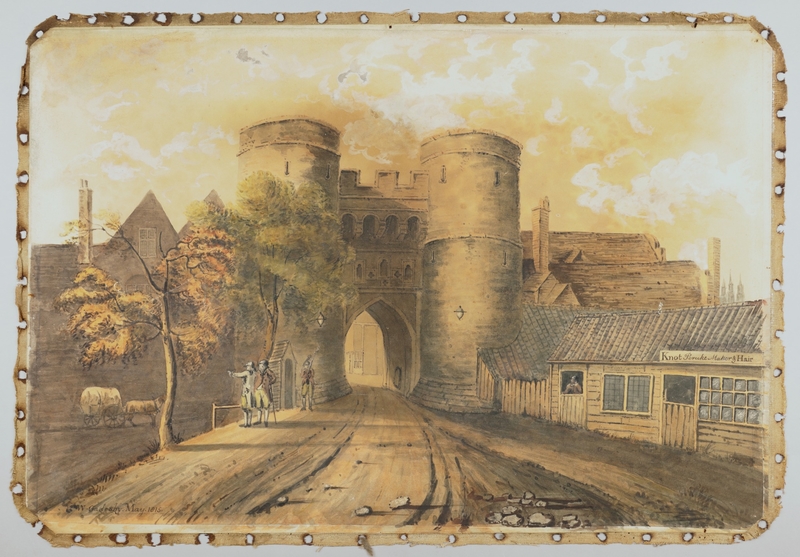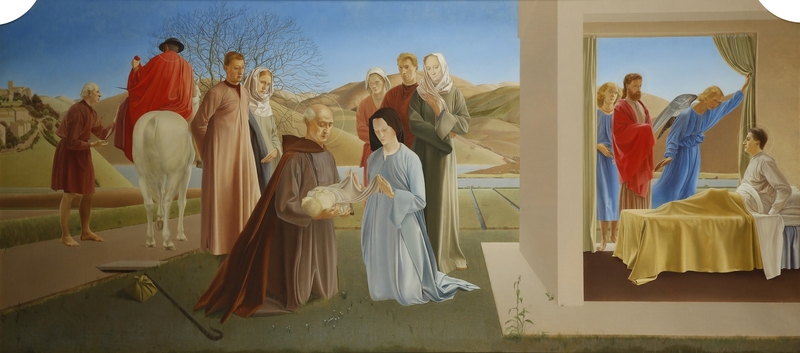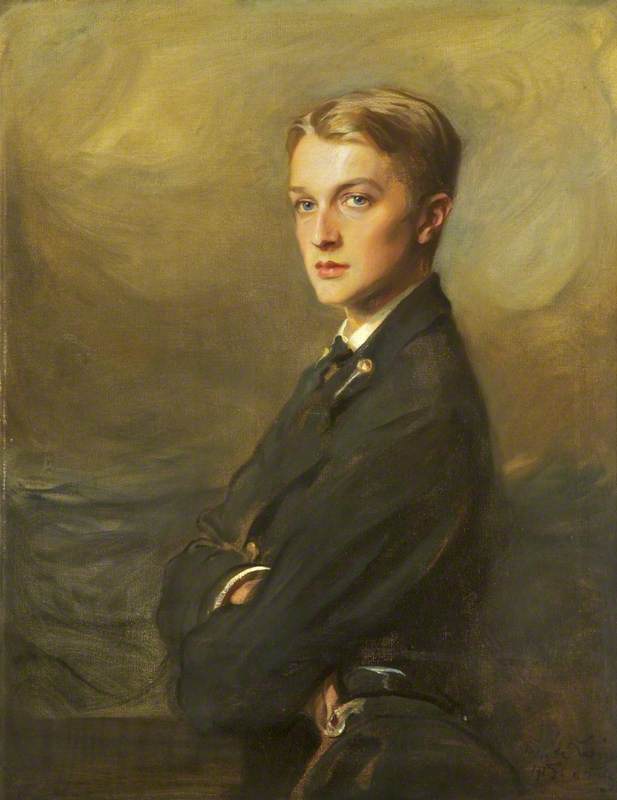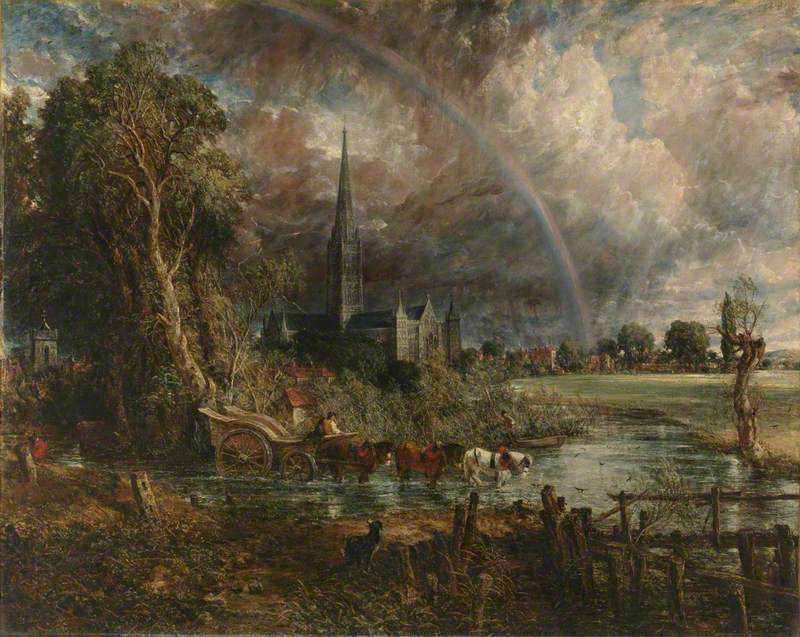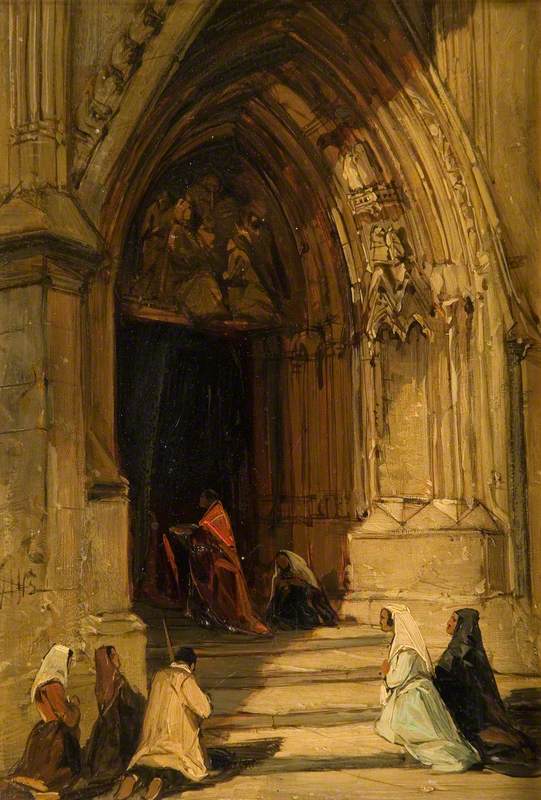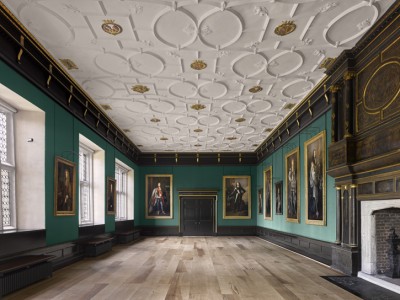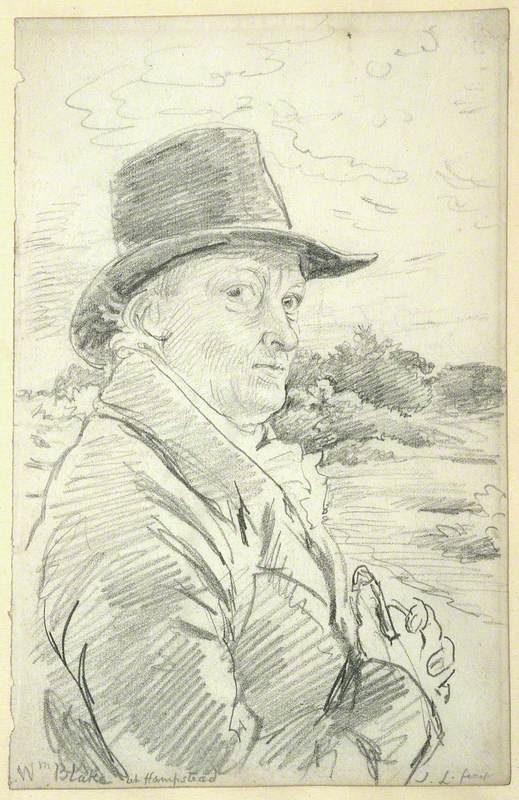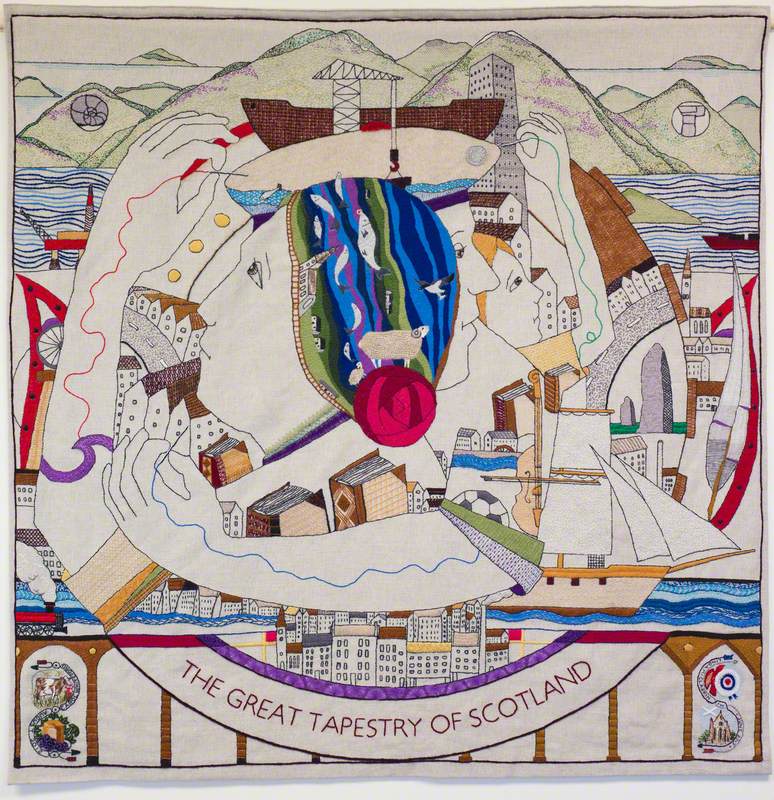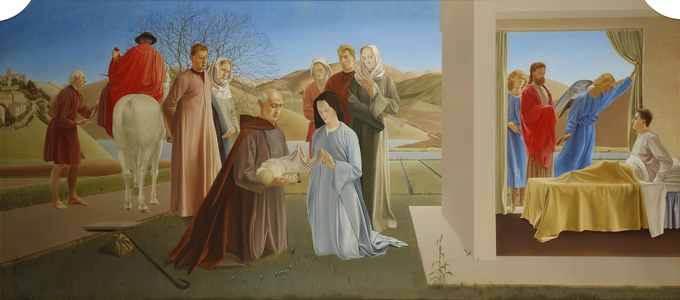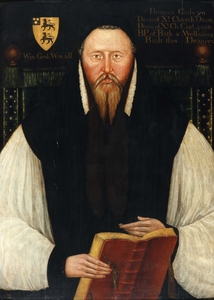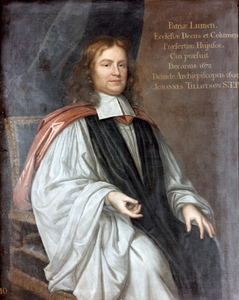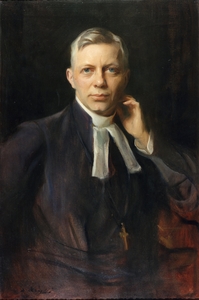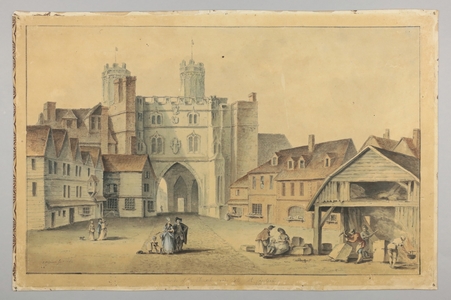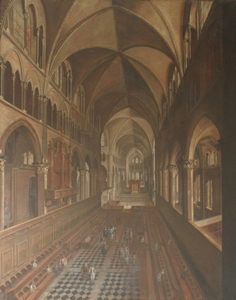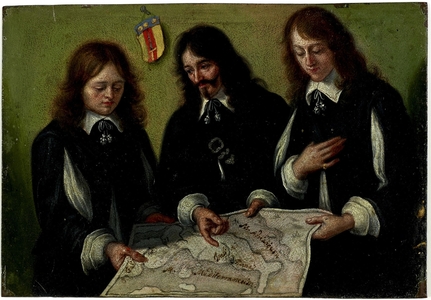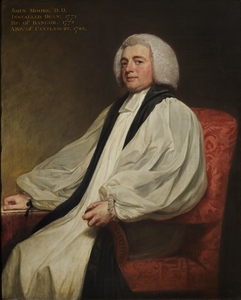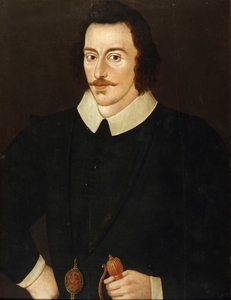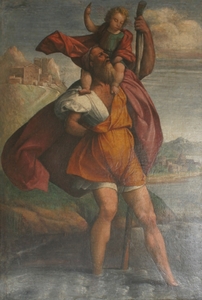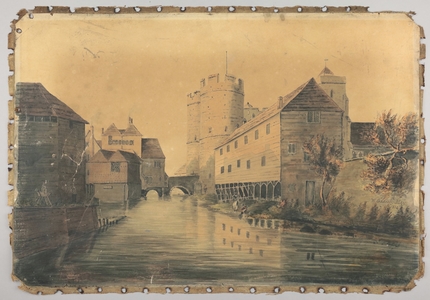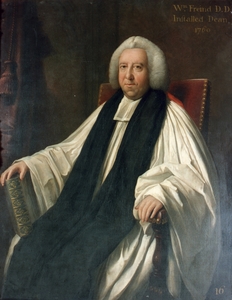Canterbury Cathedral is the oldest cathedral foundation in England, having been founded by Saint Augustine of Canterbury in the year 597 AD. It is the seat of the Archbishop of Canterbury, who is the leader of the Church of England and of the worldwide Anglican Communion, and who holds the longest-standing office in the UK.
West End of the Cathedral at Canterbury
1768
Samuel Hieronymous Grimm (1733–1794) 
Today, Canterbury Cathedral is itself a masterpiece of art and human creativity expressed through architecture, statuary, stained glass and woodwork. Throughout its long history, the Cathedral has looked after collections of artefacts, books, manuscripts and archives which have assisted in its ministry as a place of Christian worship and which document the story of its work and community. The oldest items in today's collection are charters dating from Anglo-Saxon times. Most of these have always been kept on the same site, for over 1,000 years; they are older than any of the Cathedral's buildings which stand today.
The Cathedral's contribution to Art UK focuses on works in oil from the collections. Some of these works form altarpieces within the Cathedral, thus retaining a liturgical purpose. These include the painting known as 'Scenes from the Life of St Martin of Tours', completed by Winifred Knights in 1933. Knights' work was influenced by her experiences of living through the First World War, and by the art of Italy, where she studied. However, equally integral to the understanding of the work is the story of the commissioning of the painting and its intended location in St Martin's Chapel.
Other works provide evidence for decorative schemes formerly extant in the Cathedral. These include the painting of the Anglo-Saxon queen Ediva/Eadgifu, wife of King Edward the Elder and mother to two English kings. The portrait is thought to be fifteenth-century and part of a set of paintings of benefactors of the medieval cathedral priory. It is the only survival from that set, and hangs near the site of a shrine which held Ediva's remains until its destruction during the Reformation in the 1540s. The background of the portrait is thought to depict landscape near Canterbury.
Hon. James Cornwallis (1743–1824), Dean of Canterbury (1775–1781)
1795
George Romney (1734–1802) 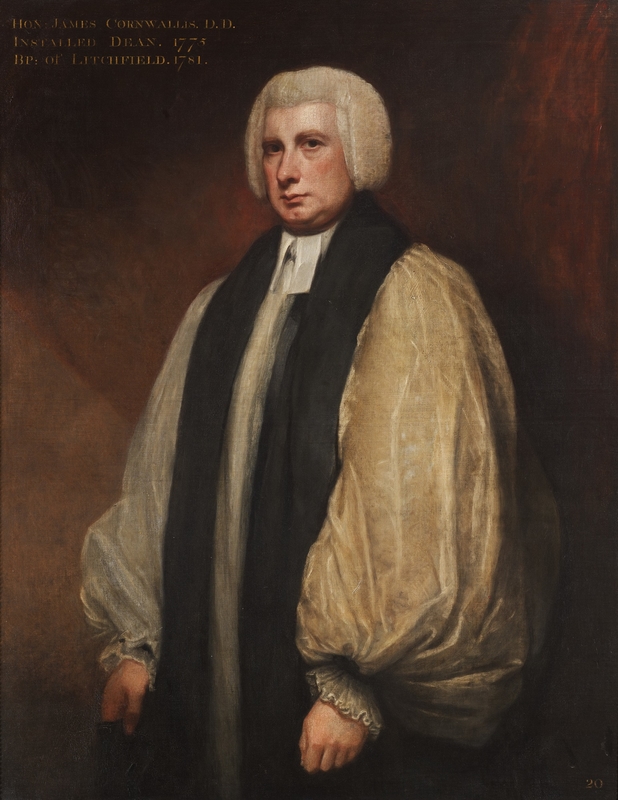
A particularly notable series within the paintings collection is that of portraits of Deans of the Cathedral. This set of portraits depicts every holder of the office from the Reformation until the present day, except for the Dean in 1643, and for the current Dean, Dr David Monteith. The set is comparable to that of portraits of the Archbishops of Canterbury held at Lambeth Palace Library. This is considered the longest and most complete series of portraits of office-holders, other than monarchs, in the UK. Considered in this way, Canterbury Cathedral's set comes second to Lambeth's.
Thomas Godwin (1517–1590), Dean of Canterbury (1567–1584)
c.1584
unknown artist 
The earliest portraits are those of Deans Thomas Godwin and Richard Rogers, the second and third Deans of Canterbury, which were probably painted in the 1580s. These are in a typically stiff Elizabethan style. Both men are shown holding books, with their shields of arms clearly displayed.
Nicholas Wotton (c.1497–1567), Dean of Canterbury (1541–1567)
1540
unknown artist 
The first Dean of Canterbury, Nicholas Wotton, came into office when the Cathedral was refounded in 1541 under Henry VIII, after the dissolution of the monastery of the cathedral priory. Wootton's portrait was painted during the reign of Charles I, presumably based on a now-lost portrait, alongside the portraits of three other Deans. It is likely that Dean Isaac Bargrave commissioned these works from a local artist.
Isaac Bargrave (1586–1643), Dean of Canterbury (1625–1642)
1636
Cornelius Johnson (1593–1661) (attributed to) 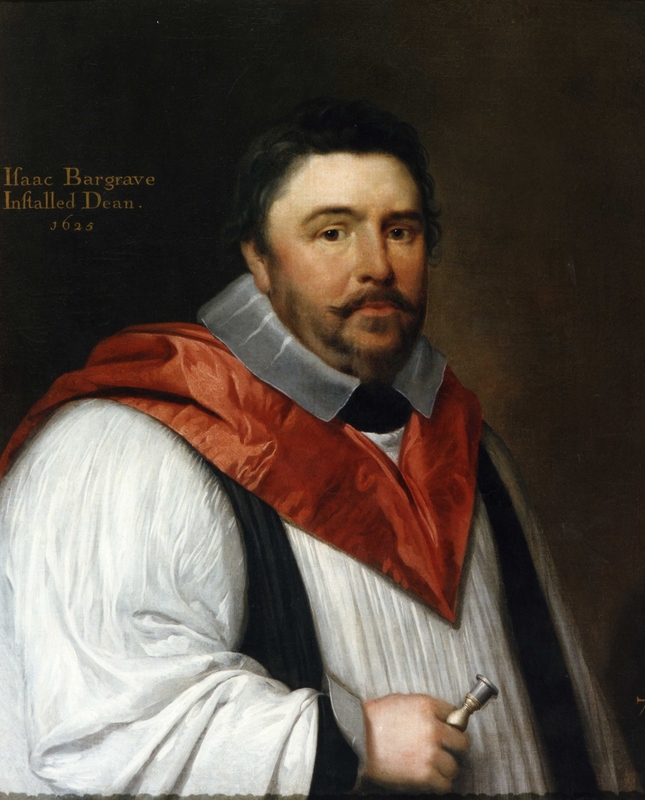
Bargrave's own portrait is a version of that by Cornelius Johnson now at Clare College in Cambridge, where he studied. In both portraits he is shown holding a sealing matrix; the Cathedral's shows him wearing an academic hood over his clerical surplice.
John Tillotson (1630–1694), Dean of Canterbury (1672–1689)
c.1670–1680
Mary Beale (1633–1699) 
The first identifiable artist of a Dean's portrait is Mary Beale, who painted John Tillotson, Dean from 1672 to 1689. Tillotson sat at least twice for Beale, who was the daughter of a clergyman and worked as a professional artist in London. In the later eighteenth century, the society portrait-painter George Romney painted the portraits of three Deans, Brownlow North, John Moore and James Cornwallis.
George Bell (1883–1958), Dean of Canterbury (1924–1929)
1920s
Philip Alexius de László (1869–1937) 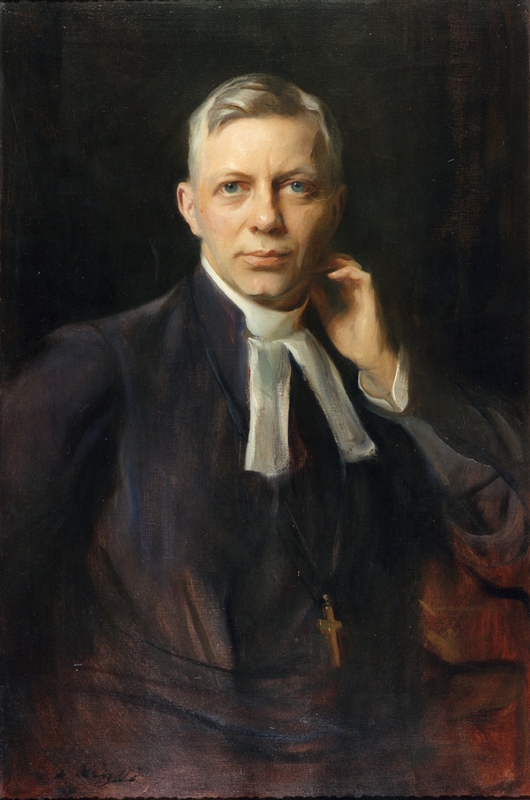
Of the twentieth-century portraits, particularly notable is that of Dean George Bell painted in the 1920s by Philip Alexius de László. De László himself estimated that he painted about 2,700 portraits over his career; he painted several fine portraits of Cosmo Gordon Lang, whose enthronement as Archbishop in the Cathedral was overseen by Bell in 1928.
Victor de Waal (b.1929), Dean of Canterbury (1976–1986)
1978
Marie-Louise von Motesiczky (1906–1996) 
A striking portrait in a very different style is that painted of Dean Victor de Waal in 1978 by the Austrian-born Marie-Louise Motesiczky. Motesiczky came from a Viennese Jewish family, as had de Waal's mother, who came from the Ephrussi family.
Inside of the Churchyard Gate at Canterbury
1768
Samuel Hieronymous Grimm (1733–1794) 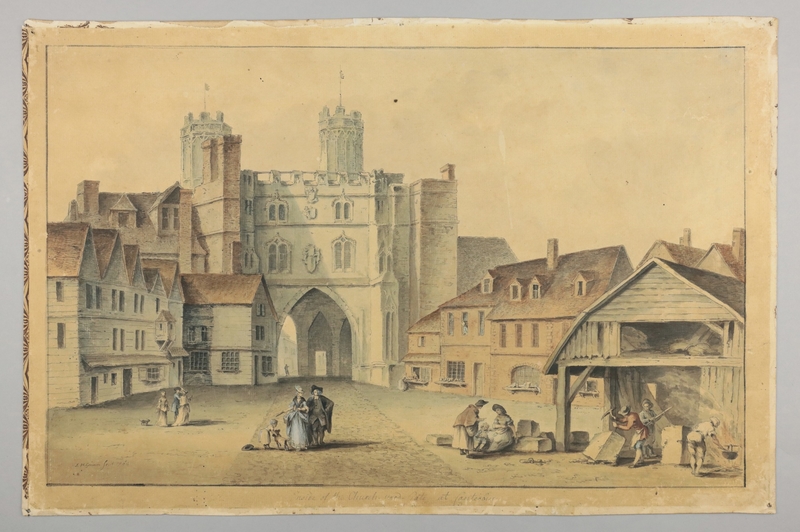
Also included in our contribution are some views of the Cathedral, executed in oil and in watercolour. These include some works by Samuel Hieronymus Grimm (1734–1794), who was Swiss by birth. One of these shows stonemasons at work, visitors strolling and shop-keepers selling wares in the grounds (precincts) of the Cathedral, with the Christ Church Gate in the background. The scene is interesting evidence for the appearance of these buildings, and evokes the life of the Georgian Cathedral.
Interior of Canterbury Cathedral Showing Quire and High Altar
Peeter Neeffs the younger (1620–1675) 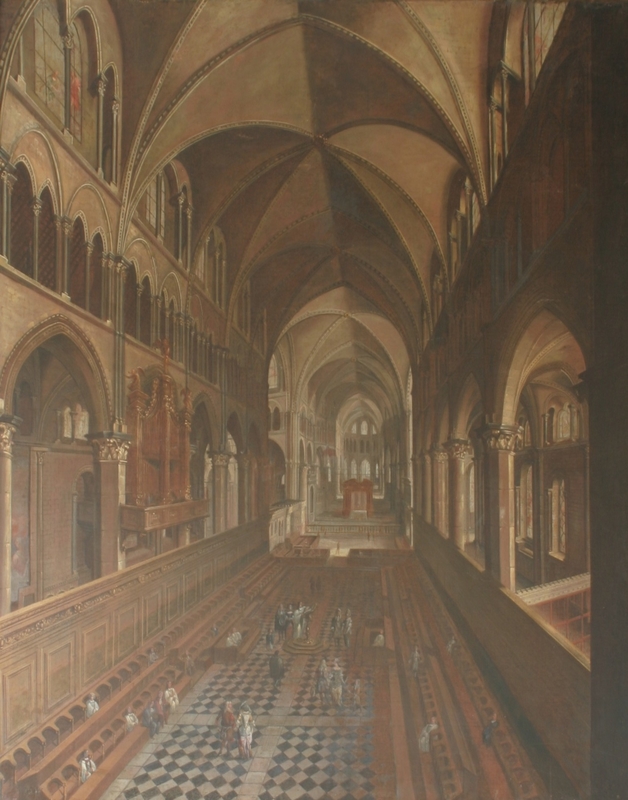
Canterbury Cathedral has been painted frequently over the centuries, including by Joseph Mallord William Turner, who was a regular visitor to nearby Margate. Art UK provides an invaluable opportunity to bring together depictions of the Cathedral held in other collections alongside works still held here and thus enhance the understanding and appreciation of our buildings and our history.
Cressida Williams, Archives and Library Manager at Canterbury Cathedral





